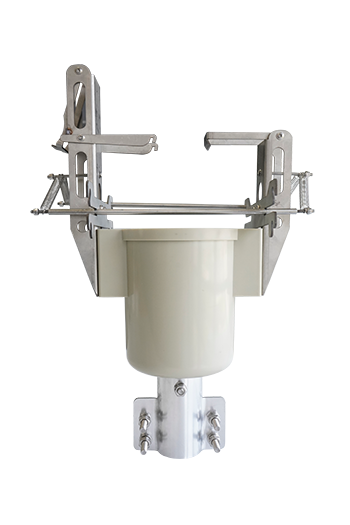News
Do You Know Overhead Transmission Lines? Basic Knowledge of Overhead Transmission Lines
Date:2022-11-17
Overhead transmission lines are power lines erected on the ground and insulated by insulators and air. Overhead lines are composed of conductors, overhead ground wires, insulator strings, pole towers, grounding devices and other parts.

1. Introduction to overhead transmission lines
The wire undertakes the function of conducting current and must have a sufficient cross-section to maintain a reasonable current density. The wires are all at high potential. In order to reduce the power loss and electromagnetic interference caused by corona discharge, the wire should also have a larger radius of curvature. Due to the large transmission capacity and high working voltage of ultra-high voltage transmission lines, split conductors are often used (that is, multiple conductors are used to form a phase conductor. 2-split, 3-split or 4-split conductors are used most. UHV transmission lines use 6, 8 , 10 or 12 split wires). Overhead ground wires (also known as lightning protection wires) are mainly used to prevent accidents caused by lightning strikes on overhead lines, and they work together with grounding devices for lightning protection. The insulator string is composed of a single suspension insulator connected in series, which needs to meet the requirements of dielectric strength and mechanical strength. The number of insulators in each string is mainly determined according to different voltage levels, and rod insulators can also be used in series. For overhead lines in special locations, such as polluted areas, special types of insulator strings are required. The pole tower is the main supporting structure of the overhead line, mostly composed of reinforced concrete or steel, and the structural design is carried out according to the requirements of mechanical strength and electrical insulation strength.
2. Advantages of overhead transmission lines
Compared with underground transmission lines, the construction cost of overhead lines is low, the construction period is short, and it is easy to repair and maintain. Therefore, overhead line transmission is the main transmission method adopted since the development of the electric power industry. The so-called transmission line usually refers to the overhead transmission line. Power stations, substations and load points in different regions are connected through overhead lines to transmit or exchange electric energy to form power networks or distribution networks of various voltage levels.
3. Considerations for overhead transmission lines
Overhead lines are exposed to the atmospheric environment and will be directly affected by meteorological conditions. They must have a certain mechanical strength to adapt to local temperature changes, strong storms, icing loads, and floods that may be encountered when crossing rivers. At the same time, lightning strikes, rain, wet fog, and natural and industrial pollution will also damage or reduce the insulation strength of overhead lines and even cause power outages. There is also the problem of electromagnetic environment interference in overhead lines. These factors must be considered in the design, operation and maintenance of overhead lines.
4. Line corridors of overhead transmission lines
The path of overhead lines requires sufficient ground width and clear corridors, or line corridors. High-voltage and ultra-high-voltage overhead lines and overhead lines for urban power supply are difficult to open line corridors due to restrictions on land use, natural environment, and urban construction, which often brings difficulties to line construction and becomes an obstacle to the development of overhead transmission lines. Some industrially developed countries often adopt the method of paralleling the same pole, that is, the transmission lines of the same or different voltage levels are erected on the same pole to save line corridors.
5. Structure of overhead transmission lines
Transmission lines are generally used to connect regional power plants and substations on the receiving side. In order to ensure a certain distance between the live wire of the transmission line and the ground, the wire must be supported by a tower. The horizontal distance between the centerlines of adjacent towers is called the span. Several spans between two adjacent base towers form a tension section, and the tension section consists of 4 spans. If there is only one span in the tensile section, it is called an isolated span. A transmission line always consists of several tensile sections, including isolated sections.
The components of overhead transmission lines mainly include conductors, lightning protection wires (ground wires for short), fittings, insulators, pole towers, guy wires and foundations.
Below we will briefly explain the basic functions and types of these components. Their technical characteristics, classification and selection requirements will be described in detail in the next section.
5.1 Conductors of overhead transmission lines
Wires are used to transmit electric current and transmit electric energy. Generally, a single wire is used for each phase of a transmission line, but for ultra-high-voltage large-capacity transmission lines, in order to reduce corona to reduce power loss and reduce interference to radio, television, etc., phase-split wires are often used, that is, two wires are used. , three, four or more wires (often fixed in a ring).
5.2 Lightning conductors and grounding bodies of overhead transmission lines
The lightning protection wire is suspended on the top of the tower, and is connected to the grounding body through the grounding wire on each base tower. When the thundercloud discharge strikes the line, because the lightning conductor is above the wire, the lightning strikes the lightning conductor first, and the lightning current is leaked into the ground through the grounding body, thereby reducing the probability of lightning strike the conductor and protecting the line insulation from lightning overvoltage damage, it plays the role of lightning protection and ensures the safe operation of the line. Generally, only lines with a voltage level above 110KV are erected across the board, and their materials are often galvanized steel strands.
5.3 Towers of overhead transmission lines
The tower is used to support the wires and lightning conductors and their accessories, and to keep a certain safety distance between the conductors, lightning conductors, pole towers, as well as between the conductors and the ground and cross spans or other buildings.
5.4 Insulators and insulating strings for overhead transmission lines
The insulator is the main component of line insulation, used to support or suspend the wire to insulate it from the tower, so as to ensure the reliable electrical insulation strength of the line. Because it is not only subjected to mechanical force and voltage, but also to withstand the erosion of harmful gases in the atmosphere.
Therefore, it is required to have sufficient mechanical strength, insulation level and corrosion resistance.
5.5 Fittings for overhead transmission lines
Transmission line fittings play the role of supporting, fixing and connecting protective conductors and lightning conductors in overhead transmission lines. And can make the wiring strong. There are many types of fittings, which can be divided into five categories according to the performance and use of fittings: wire clips, connecting fittings, protection fittings and pull fittings.
5.6 Foundations of overhead transmission lines
The tower foundation is a facility to fix the tower on the ground to ensure that the tower does not tilt, collapse, sink, etc.
For example, if a reinforced concrete pole is directly buried in the soil, the pole will sink in general soil due to the small cross-sectional area of the pole. At this time, in order to prevent the pole from sinking, a larger reinforced concrete plate-chassis is often placed at the bottom of the pole, and the chassis is the basis for preventing the pole from sinking. On the one hand, the function of the guy wire increases the strength of the tower, bears the force of the external load on the tower, so as to reduce the material consumption of the tower; Tilting and collapsing. The tower foundation adopts different types according to the terrain, geology and construction conditions.









































